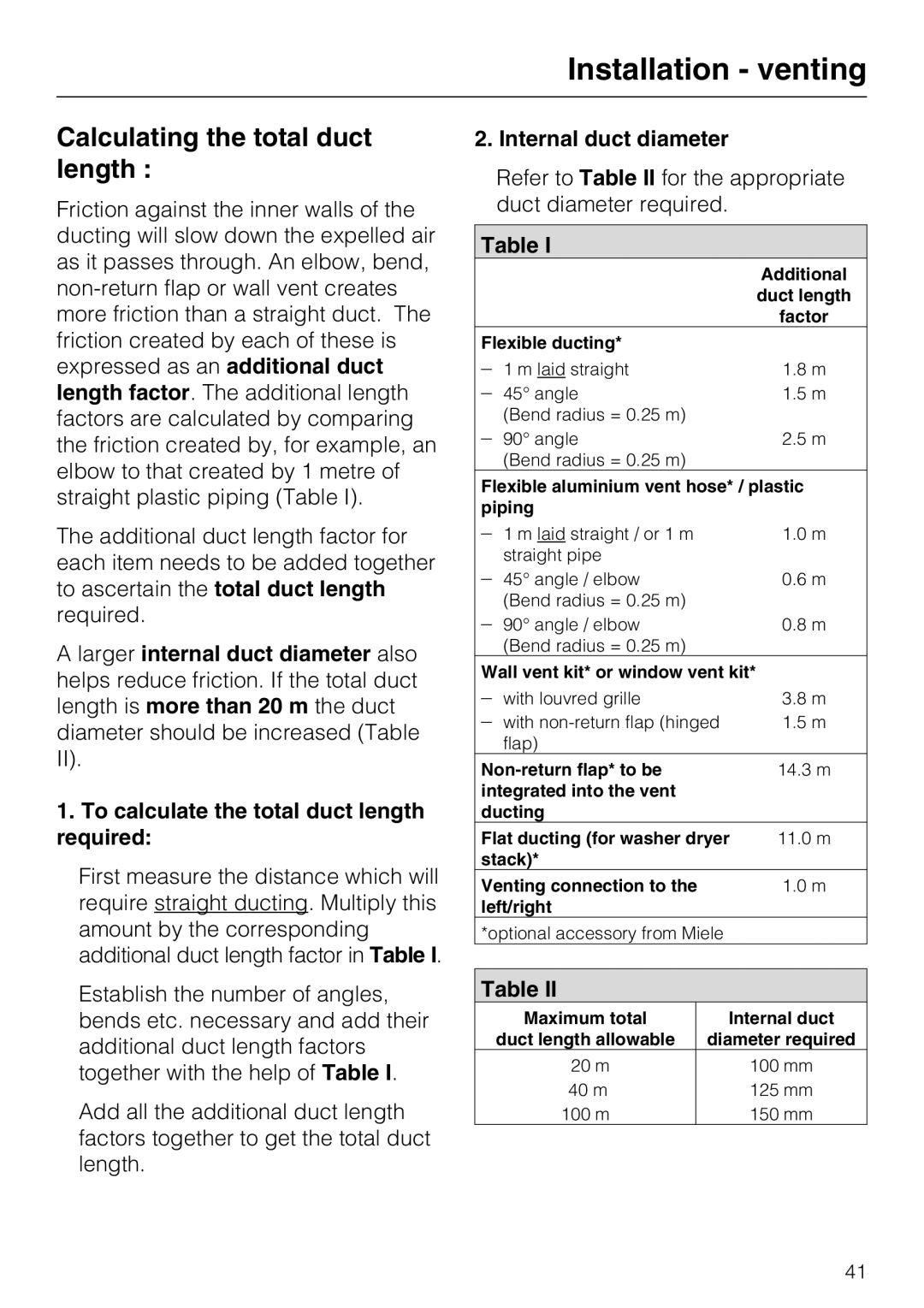T 8722 specifications
The Miele T 8722 is a remarkable tumble dryer that epitomizes quality and efficiency, designed for those who demand the best in laundry care. One of the standout features of the T 8722 is its heat pump technology, which significantly reduces energy consumption. This model is rated as energy efficient, making it not only economical for everyday use but also environmentally friendly.With a generous capacity of up to 8 kilograms, the T 8722 is suitable for large families and can handle bulky items with ease. The drum design ensures that laundry is evenly dried without snagging or tangling, which is crucial for maintaining the quality of your fabrics. Additionally, Miele's perfect drying programs adapt automatically to different fabric types, offering tailored care for everything from delicate silks to sturdy cottons.
The Miele T 8722 also boasts the innovative Miele exclusive Honeycomb drum that creates a thin film of air between the drum and your clothing. This feature prevents direct contact, providing gentle care and reducing wear and tear on your garments. With multiple drying levels and programs, users can select the ideal option according to their needs, ensuring optimal results every time.
Another key characteristic of the T 8722 is its sophisticated control panel. The user-friendly interface features clear settings and options, streamlining the drying process. The model is equipped with a large display that provides users with information regarding cycle times, drying stages, and remaining time, making it simple to monitor the progress of your laundry.
In terms of maintenance, the Miele T 8722 is designed with convenience in mind. The filter system is easily accessible, allowing for simple cleaning to ensure optimal performance. The integrated heat exchanger is also designed to be self-cleaning, which means less hassle for the user while maintaining efficient operation.
Safety features are also prioritized in the T 8722, including a child lock mechanism and an overheating protection system. This combination of features not only reinforces user safety but also contributes to the overall reliability of the appliance.
In summary, the Miele T 8722 tumble dryer encapsulates the brand's commitment to quality, efficiency, and user-friendly design. With advanced technologies, customized drying programs, and a focus on fabric care, it is an ideal addition to any modern laundry room.

